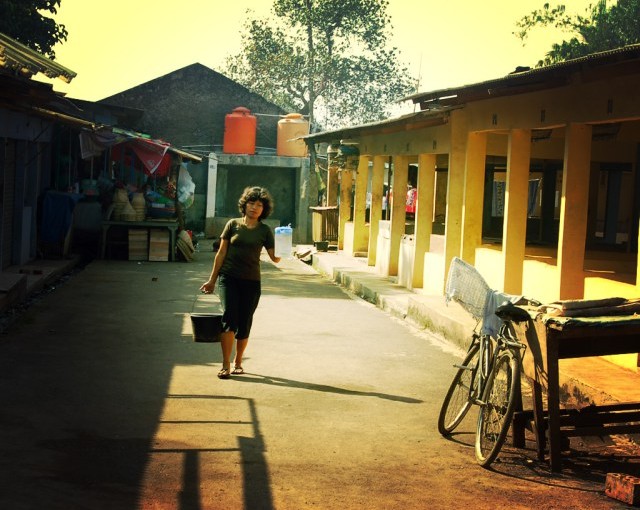Plantations International Information

By Meghna Krishnadas. Initially released by Yale Setup Review.
South-east Asia arranges several of the globe’s most biodiverse woodlands. In enhancement to their magnificent selections splendor, a variety of these timberlands additionally offer important setting solutions linked to carbon storage area, atmosphere rule, water safety, and dirt wellness. Nonetheless, international market stress combined with a strong push for local growth during the last Twenty Years have in fact caused huge conversion of woodland continent to non-forest objectives throughout the location. While such forest damages have in fact long been common competence, there had been no rigorous estimate of the actual levels of woodlands lost to big commercial drivers.A research study released in the journal Conservation Letters found that four major markets– – logging, fiber plantations, oil hand, along with coal mining – included to essentially 45 percent of the overall forest cover loss in Indonesia from 2000 to 2010. Instead of common belief, logging as well as fiber vineyards– – not oil hand – had the very best family member impacts.The research study team of researchers from ETH Zurich, Princeton College, along with College of Adelaide made use of Geographical Information Equipment (GIS )gadgets to evaluate woodland loss from throughout the Ten Years. Focusing on 5 islands(Sumatra, Kalimantan, Sulawesi, Moluccas, as well as Papua)which had 97 percent of Indonesia’s forest cover in 2010, the scientists assembled geospatial data on both timberland cover as well as the areas as well as degree of the four industries. With each other, the information were used to assess the decrease of forest cover as a result of each sector.Of the complete 15 million hectares (Mha)of forests lost throughout from 2000 to 2010, 6.6 Mha
(~ 45 percent )was associateded with the above 4 fields. Logging offering ins as well as fast-growing tree cattle ranches for fiber added 1.9 and also 1.8 Mha particularly. Oil hand was available in a close third(1.6 Mha). Nevertheless, patterns varied between Indonesian islands. For instance, balanced losses as a result of oil hand were highest possible in Kalimantan whereas fiber farmhouses were the main crook in Sumatra. These differences underscore the local version that needs to be stood for throughout preservation planning.The group additionally evaluated relative losses in various forest types. Lowland forests were the most dreadful favored, totaling up to stunning declines in carbon
stock because of above-ground tree biomass loss. Gross carbon exhausts as an outcome of forest loss within all 4 business markets while span ranged from 4,577 to 8,662 metric loads CO 2– – or 42 to 45 percent of carbon wears down from complete woodland loss.Of the 77 Mha of timberland that continuouslied be on these 5 Indonesian islands in 2010, essentially 35 percent is situated within logging concessions. In addition, logging giving up as well as fiber cattle ranches furthermore consisted of
the largest existing carbon stocks. The authors point out that without correct plan to control logging, a bunch of this forest is most likely to be shed in the near to future.In addition, taking right into factor to consider that the research study only covered four sectors, the real level of woodland loss might be also bigger as compared to estimated here. For circumstances, numerous other agro-industrial plants like rubber, coffee, in addition to cacao in addition to other mining activities(gold, copper)are also likely to add to constant forest losses.Importantly, 55 percent of forest loss in Indonesia took location outside of these business tasks. Identifying aspects accountable for harmful smaller-scale losses that make-up this considerable percentage is a big preservation obstacle. The researchers therefore emphasizing
the should produce extensive local maps of continent property as well as also land-use across Indonesia to produce a comprehensive data source for conservation monitoring.Regardless of warnings, this research study highlights the ought to quantify timberland loss in other biodiversity hotspots of the world. Big redesigns in GIS innovations and also simple ease of access to satellite details today could help set up forest cover standards and allow extensive surveillance. GIS-based research study studies will certainly have to be coupled with on-ground research studies along with eco-friendly area study to get a complete image of the impacts of industries on woodlands in addition to biodiversity.Such information along with information at a variety of levels is a crucial component of preservation preparing and strategy required to manage timberland loss in biodiversity hotspots within creating nations. Determining markets that are the primary aspects to logging is the initial step in the direction of establishing a lot much more long-term business methods. Plantations International
The article Logging triggers more timberland loss contrasted to oil hand in Indonesia showed up initially on Plantations International.
